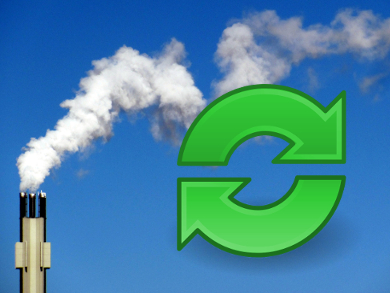Carbon dioxide emissions from the use of fossil fuels are a leading cause of man-made climate change. Capturing and storing CO2 has been proposed as one solution to reduce emissions. However, it would be preferable to not just store it, but turn carbon dioxide back into a useful fuel.
Ewa Bogel-Łukasik, Luís C. Branco, and colleagues, Universidade Nova de Lisboa, Caparica, Portugal, have developed a hydrogenation of CO2 to give methane. The reaction uses an ionic liquid as a solvent and ruthenium nanoparticles as a catalyst. Ionic liquids are organic salts with low melting temperatures. In this case, the team used [omim][NTf2] (1-octyl-3-methylimidazolium bistrifluoromethanesulfonylimide). They generated the nanoparticle catalyst in situ by adding Ru(cod)-methylallyl2 (cod = 1,5-cyclooctadiene) to the ionic liquid in a steel autoclave, which was then filled with CO2 and H2 gas at combined pressures of 80 bar.
The researchers achieved a 69 % yield of methane using 0.24 mol% ruthenium catalyst at 150 °C. The generated nanoparticles were characterized using transmission electron microscopy (TEM) and were found to have an average size of 2.5 nm. According to the team, the approach could be further developed into a flow process, which shows its promise for future applications.
- Hydrogenation of Carbon Dioxide to Methane by Ruthenium Nanoparticles in Ionic Liquid,
Catarina I. Melo, Anna Szczepańska, Ewa Bogel-Łukasik, Manuel Nunes da Ponte, Luís C. Branco,
ChemSusChem 2016.
DOI: 10.1002/cssc.201600203




